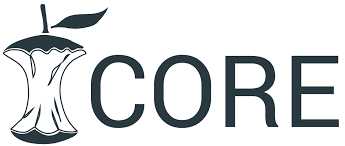ISSUES, CHALLENGES AND OPPORTUNITIES IN BLOCKCHAIN-BASED EDUCATIONAL PARADIGMS: A SYSTEMATIC LITERATURE REVIEW PROTOCOL
DOI:
https://doi.org/10.25195/ijci.v47i2.321Keywords:
Systematic Literature Review Protocol (SLRP), Higher Education Institution (HEI), Blockchain-Based Educational Paradigms (BCBEP)Abstract
Blockchain is a new technology that provides services of immutability, trust, disintermediation, collaboration, transparency. Nowadays, the use of this new technology is mostly used for Bitcoin and other cryptocurrencies, but apart from this, blockchain technology improved the performance level of other areas of life i.e. Higher Education Institution (HEI) and stakeholders, certificate verification, and many other domains. Students and educational institutions' important data are mostly shared via different networks. The data integrity, privacy, and security are the major issues for these in blockchain technology which cannot be avoided. This paper is a documented plan for to conduct or a protocol based on which a systematic literature review would be conducted focusing on the issues, challenges, and major strengths of blockchain and its educational paradigms. The result of this review will be highly helpful for the new researchers to overcome the proposed issues and challenges, exploring educational paradigms in Blockchain, elaborate the major strengths helping the educational institutes in adapting process and increase the level of satisfaction. This study plans to explore some educational types with some issues and challenges such as scalability, immutability, and easy adaptation.
Downloads
Downloads
Published
Issue
Section
License

This work is licensed under a Creative Commons Attribution-NonCommercial-NoDerivatives 4.0 International License.
IJCI applies the Creative Commons Attribution (CC BY) license to articles. The author of the submitted paper for publication by IJCI has the CC BY license. Under this Open Access license, the author gives an agreement to any author to reuse the article in whole or part for any purpose, even for commercial purposes. Anyone may copy, distribute, or reuse the content as long as the author and source are properly cited. This facility helps in re-use and ensures that journal content is available for the needs of research.
If the manuscript contains photos, images, figures, tables, audio files, videos, etc., that the author or the co-authors do not own, IJCI will require the author to provide the journal with proof that the owner of that content has given the author written permission to use it, and the owner has approved that the CC BY license being applied to content. IJCI provides a form that the author can use to ask for permission from the owner. If the author does not have owner permission, IJCI will ask the author to remove that content and/or replace it with other content that the author owns or has such permission to use.
Many authors assume that if they previously published a paper through another publisher, they have the right to reuse that content in their PLOS paper, but that is not necessarily the case – it depends on the license that covers the other paper. The author must ascertain the rights he/she has of a specific license (a license that enables the author to use the content). The author must obtain written permission from the publisher to use the content in the IJCI paper. The author should not include any content in her/his IJCI paper without having the right to use it, and always give proper attribution.
The accompanying submitted data should be stated with licensing policies, the policies should not be more restrictive than CC BY.
IJCI has the right to remove photos, captures, images, figures, tables, illustrations, audio, and video files, from a paper before or after publication, if these contents were included in the author's paper without permission from the owner of the content.











